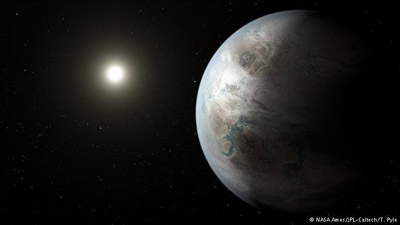Nasa's Kepler mission discovers Earth's 'older and bigger cousin'

Speaking at NASA's Ames Research Center in Moffett Field, Washington on Thursday, associate administrator for NASA's Science Mission Directorate John Grunsfeld said the discovery of the exoplanet "is a pretty close cousin of Earth."
"This exciting result brings us one step closer to finding an Earth 2.0," Grunsfeld said.
'Habitable zone'
Jon Jenkins, Kepler data analysis head at NASA's Ames Research Center in Moffett Field in California said the earth-like planet is 1.5 times the size the Earth but its 385-day orbit is only 5 percent longer.
It's mass and composition are yet to be determined, but previous research suggests that planets the size of Kepler-452b likely to be rocky.
"It's spent billions of years in the habitable zone of its star - that means it could well host life on its surface, or could have at some point in its history," Jenkins said.
The planet's parent star Kepler-452 has the same temperature as our own but is 20 percent brighter and has a diameter 10 percent larger.
The Kepler-452 system is located 1,400 light-years away in the constellation Cygnus.
Aim for humanity
Asked if humans could travel to Kepler-452b, Kepler research scientist Jeff Coughlin said: "This is humankind's first step."
"You and I probably won't be travelling to these planets - but our children's children's children could be. This gives us something to aim for."
"One generation from now we might be able to get there. It gives humanity something to aim for."
Spaceship Kepler has been searching for Earth-like planets since 2009. They must be located in the habitable zones of suns or sun-like stars with temperatures that could allow for life, at least theoretically. They must also consist of rock or metal compounds and have a solid surface - as opposed to gas-giants.
ksb/rc (Reuters, dpa)













